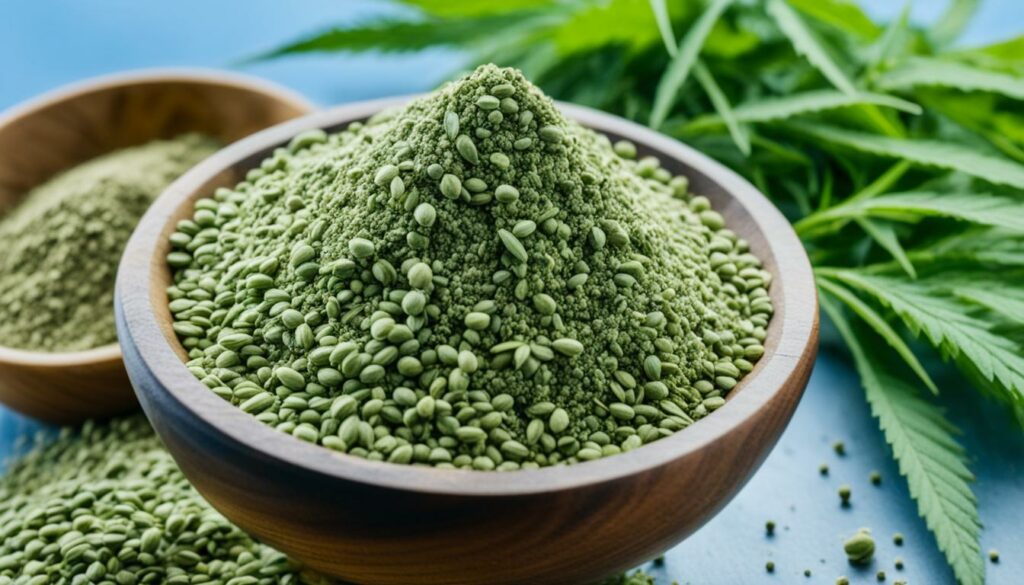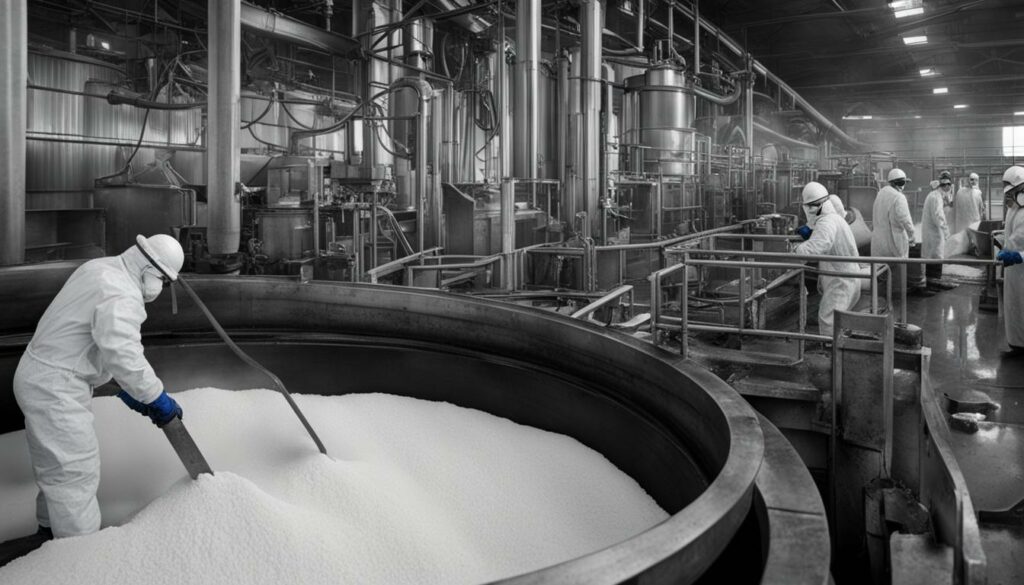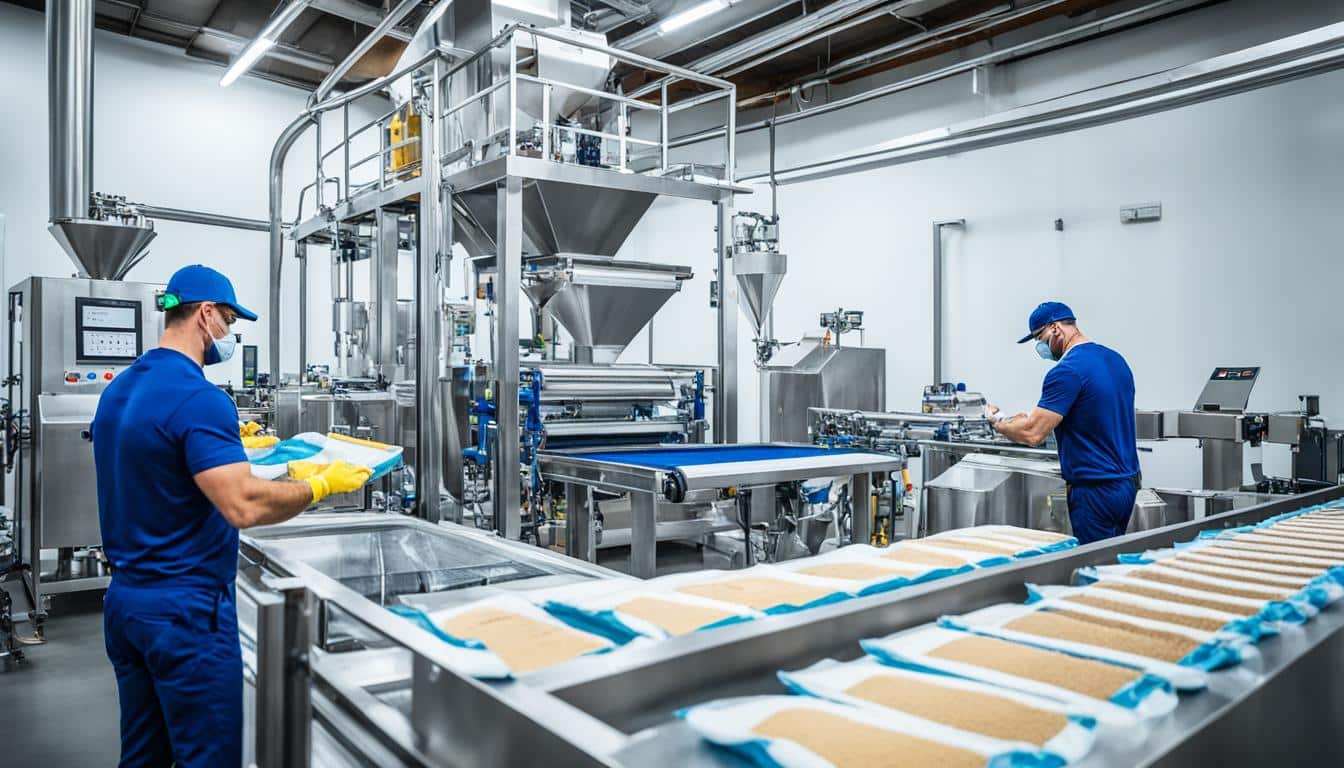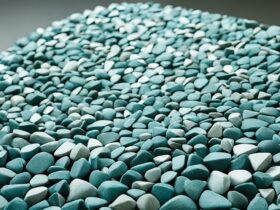If you’re curious about how vegan protein powder is made, you’ve come to the right place. In this article, we’ll take a closer look at the production process of plant-based protein powders and the methods used to create these popular dietary supplements.
Vegan protein powder is made by extracting protein from various plant sources, such as yellow split peas, hemp seeds, soy, rice, and quinoa. The protein extraction process involves methods like heat or enzyme extraction, resulting in different forms of protein powders like concentrates and isolates. These powders are not only rich in protein but also often fortified with additional ingredients like superfoods, vitamins, minerals, and sweeteners to enhance their taste and nutritional profile.
For example, pea protein powder is made by extracting protein from yellow split peas, while hemp protein powder is made by extracting protein from hemp seeds. These plant-based protein powders have gained popularity due to their high protein content, complete amino acid profiles, and their suitability for vegan and vegetarian diets.
So, how exactly is vegan protein powder made? Let’s dive into the specific processes for different types of vegan protein powders to get a better understanding.
Key Takeaways:
- Plant-based protein powders are made by extracting protein from various plant sources.
- Methods like heat or enzyme extraction are used to concentrate the protein.
- Additional ingredients like superfoods, vitamins, and minerals may be added to enhance the taste and nutritional profile.
- Pea protein powder is made from yellow split peas, while hemp protein powder is made from hemp seeds.
- Each type of vegan protein powder has its own specific manufacturing process to ensure optimal quality and nutritional value.
The Process of Making Pea Protein Powder
Pea protein powder is a popular choice among vegans and individuals with dietary restrictions. It offers a high concentration of protein and is derived from yellow split peas. Understanding how pea protein powder is made can provide valuable insights into this essential plant-based protein source.
The process of making pea protein powder involves two main phases: the dry phase and the liquid phase.
The Dry Phase:
In the dry phase, yellow split peas are first dried to reduce their moisture content. Once dried, the peas are ground into a fine powder. This process helps break down the peas’ structure and prepares them for the next phase.
The Liquid Phase:
During the liquid phase, the powdered peas are mixed with water. This water mixture facilitates the separation of fiber and starch from the protein content. Separating the fiber and starch helps create a more concentrated protein powder.
The resulting protein powder can be categorized into two forms: pea protein concentrate and pea protein isolate.
Pea Protein Concentrate:
Pea protein concentrate is made by processing the protein powder in a way that retains some of the starch and fiber content. While this form has a lower protein concentration compared to isolate, it is rich in other nutrients, vitamins, and minerals naturally present in peas.
Pea Protein Isolate:
Pea protein isolate undergoes further processing to remove a significant portion of the starch and fiber. This additional filtration results in a higher protein concentration. Pea protein isolate is especially popular among athletes and individuals looking for a protein powder with minimal carbohydrate content.
No matter which form you choose, both pea protein concentrate and pea protein isolate provide a complete and nutritious protein source. They offer all the essential amino acids needed for optimal health and muscle recovery.
Pea protein powder is a versatile and sustainable option for vegans and those seeking plant-based protein alternatives. It can be used in smoothies, baked goods, and other recipes to boost protein intake and support a healthy lifestyle.
| Pea Protein Concentrate | Pea Protein Isolate |
|---|---|
| Lower protein concentration | Higher protein concentration |
| Contains more starch and fiber | Minimal carbohydrate content |
| Retains natural vitamins, minerals, and nutrients present in peas | Offers a cleaner protein source with reduced carbohydrates and fats |
Whichever form you prefer, pea protein powder provides an excellent vegan protein option that can support your fitness goals and dietary needs. Incorporating this plant-based protein powder into your daily routine can help you meet your protein requirements without compromising your dietary preferences or restrictions.
The Process of Making Hemp Protein Powder
Hemp protein powder is a popular plant-based protein source that is made from the seeds of the hemp plant. The production of hemp protein powder involves several steps to ensure the extraction of high-quality protein while maintaining the nutritional integrity of the plant.

Harvesting and Preparation
The first step in making hemp protein powder is the harvesting of hemp plants. Once the plants are harvested, they undergo a cleaning process to remove any dirt, debris, or impurities. After cleaning, the plants are dried, either naturally or using a drying machine, to reduce the moisture content and prevent mold or bacterial growth. The dried hemp plants are then dehulled to remove the outer shells of the seeds, leaving only the inner seed kernel.
Oil Extraction and Byproduct
The next stage is the extraction of hemp oil from the hemp seeds. The seeds are pressed to extract the oil, leaving behind a byproduct known as hemp cake or hemp meal. This hemp cake or meal is rich in protein and fiber, which are essential components of hemp protein powder.
“The extraction of hemp oil from the seeds is a critical step in the production of hemp protein powder, as it provides the base for the protein-rich byproduct.”
Processing and Milling
After the oil extraction, the hemp cake or meal goes through a milling process to obtain a fine powder substance. This milling process break downs the hemp cake or meal into smaller particles, resulting in a more consistent and easily mixable powder. The milling process also helps to separate any remaining impurities from the hemp protein powder.
Nutritional Profile
Hemp protein powder is valued for its nutritional composition. It contains a range of essential amino acids, including the proteins albumin and edestin, which are easily digestible by the body. Additionally, hemp protein powder is a good source of minerals such as potassium, phosphorus, and magnesium. It also provides a balanced ratio of omega-3 and omega-6 fatty acids, making it a nutritious addition to a plant-based diet.
Nutritional Composition of Hemp Protein Powder
| Nutrient | Amount per Serving |
|---|---|
| Protein | 20g |
| Fiber | 5g |
| Omega-3 Fatty Acids | 2g |
| Omega-6 Fatty Acids | 6g |
| Potassium | 400mg |
| Phosphorus | 300mg |
| Magnesium | 100mg |
The Process of Making Whey Protein Powder
Whey protein powder, a popular choice among fitness enthusiasts and athletes, is derived from cow’s milk. It is produced specifically from the liquid byproduct that remains after the curd has been strained during the cheese-making process.
The production of whey protein powder involves several key steps:
- Treating the liquid whey with enzymes: After the curd is strained, the remaining liquid whey is treated with enzymes to separate the whey and casein proteins. This enzymatic treatment helps in breaking down the complex protein structure for further processing.
- Creating whey protein concentrate: The next step is the creation of whey protein concentrate. During this process, some of the lactose and minerals present in the liquid whey are filtered out, resulting in a protein-rich concentrate.
- Obtaining whey protein isolate: For those looking for a purer form of whey protein, the production process involves an additional filtration step to create whey protein isolate. This filtration helps in removing a greater percentage of carbohydrates and fats from the liquid whey, leaving behind a highly concentrated protein powder.
- Spray-drying to create powdered form: Both whey protein concentrate and isolate undergo a final stage known as spray-drying. In this step, the liquid whey is transformed into a powder form by removing the water content through a process of atomization using hot air. The result is a fine powder that is easy to mix and digest.
The process of making whey protein powder results in a product known for its high biological value, fast absorption, and muscle-building properties. It contains all nine essential amino acids, making it a complete protein source. However, it is important to note that whey protein powder may not be suitable for individuals with lactose intolerance or dairy allergies.

By understanding how whey protein powder is made, individuals can make informed choices about their protein supplementation and achieve their health and fitness goals.
Conclusion
Vegan protein powder is a versatile nutritional supplement that is made using various manufacturing methods tailored to different plant sources. These methods include extraction, concentration, and processing of protein from plants, resulting in a diverse range of vegan protein powders like pea protein and hemp protein.
The production of vegan protein powders has evolved to meet the demands of health-conscious individuals seeking nutritionally balanced and environmentally friendly options. By understanding how vegan protein powder is made, individuals can make informed choices about their protein supplementation.
In addition to commercially available options, some individuals may prefer to make their own vegan protein powder at home using homemade recipes. These recipes often include a combination of plant-based protein sources, such as peas, hemp seeds, soy, rice, or quinoa, along with additional ingredients like superfoods, vitamins, and sweeteners to create a personalized blend.
Whether purchasing commercially made or homemade vegan protein powder, being aware of the manufacturing methods and production techniques empowers individuals to select protein supplements that align with their dietary preferences and restrictions, contributing to their overall health and wellbeing.
Plant Protein vs Animal Protein: The Complete Comparison Guide
FAQ
How is vegan protein powder made?
Vegan protein powder is made through a process that involves extracting protein from plant sources. The protein concentration process includes methods such as heat or enzyme extraction, resulting in different forms of protein powders like concentrates and isolates. Additional ingredients like superfoods, vitamins, minerals, and sweeteners may also be added to enhance the taste and nutritional profile of the powder.
How is pea protein powder made?
Pea protein powder is made by extracting protein from yellow split peas. The process involves a dry phase, where the peas are dried and ground into a fine powder, and a liquid phase, where the powder is mixed with water to separate the fiber and starch. The resulting protein powder can be in the form of pea protein concentrate or pea protein isolate.
How is hemp protein powder made?
Hemp protein powder is made from the seeds of the hemp plant. The harvested plants are cleaned, dried, and dehulled to remove the outer shells of the seeds. The seeds are then processed to extract hemp oil, resulting in a byproduct known as hemp cake or hemp meal. This cake or meal is the base for hemp protein powder, which is obtained by milling and separating the powder to obtain a fine powder substance.
How is whey protein powder made?
Whey protein powder is derived from cow’s milk, specifically from the liquid byproduct that remains after the curd has been strained during the cheese-making process. The liquid whey is treated with enzymes to separate the whey and casein proteins. Whey protein concentrate is made by filtering out some of the lactose and minerals from the liquid whey, while whey protein isolate goes through further filtration to remove carbohydrates and fats. Both whey protein concentrate and isolate are then spray-dried to remove the water content and create a powder.
What are the different types of vegan protein powder?
Vegan protein powders can be made from various plant sources. Some examples include pea protein powder, hemp protein powder, soy protein powder, rice protein powder, and quinoa protein powder. Each type of powder has unique characteristics and nutritional profiles, allowing individuals to choose the one that best suits their dietary needs and preferences.
Are homemade vegan protein powders as effective as store-bought ones?
Homemade vegan protein powders can be a cost-effective and customizable option for individuals who prefer to make their own blends. However, it is important to ensure that homemade protein powders are properly balanced with essential amino acids and nutrients. Consultation with a nutritionist or dietitian may be beneficial to ensure that homemade protein powders meet individual dietary requirements.





